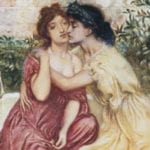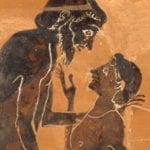 Miscellaneous
Miscellaneous  Miscellaneous
Miscellaneous  Animals
Animals 10 Strange Attempts to Smuggle Animals
 Travel
Travel 10 Natural Rock Formations That Will Make You Do a Double Take
 Movies and TV
Movies and TV 10 Actors Hidden in Your Favorite Movies
 Our World
Our World 10 Science Facts That Will Change How You Look at the World
 Pop Culture
Pop Culture 10 Incredible Female Comic Book Artists
 Crime
Crime 10 Terrifying Serial Killers from Centuries Ago
 Technology
Technology 10 Hilariously Over-Engineered Solutions to Simple Problems
 Miscellaneous
Miscellaneous 10 Ironic News Stories Straight out of an Alanis Morissette Song
 Politics
Politics 10 Lesser-Known Far-Right Groups of the 21st Century
 Miscellaneous
Miscellaneous 10 Undeniable Signs That People’s Views of Mushrooms Are Changing
 Animals
Animals 10 Strange Attempts to Smuggle Animals
 Travel
Travel 10 Natural Rock Formations That Will Make You Do a Double Take
Who's Behind Listverse?

Jamie Frater
Head Editor
Jamie founded Listverse due to an insatiable desire to share fascinating, obscure, and bizarre facts. He has been a guest speaker on numerous national radio and television stations and is a five time published author.
More About Us Movies and TV
Movies and TV 10 Actors Hidden in Your Favorite Movies
 Our World
Our World 10 Science Facts That Will Change How You Look at the World
 Pop Culture
Pop Culture 10 Incredible Female Comic Book Artists
 Crime
Crime 10 Terrifying Serial Killers from Centuries Ago
 Technology
Technology 10 Hilariously Over-Engineered Solutions to Simple Problems
 Miscellaneous
Miscellaneous 10 Ironic News Stories Straight out of an Alanis Morissette Song
 Politics
Politics 10 Lesser-Known Far-Right Groups of the 21st Century
Top 10 Weird Things That Happen in English Renaissance Plays
Usually, when people think of English Renaissance drama, they think of the plays by Shakespeare that they studied in school, such as Romeo and Juliet (1597) and Hamlet (c. 1599–1601). English Renaissance theater (also known as Elizabethan or Jacobean) refers to the theater of England between 1558 and 1642. Nowadays, English Renaissance plays are often thought of as highbrow, with their impressive monologues about love and death and everything in-between. But during this time, going to the theatre was the standard entertainment of the day. As a result, the plays are sometimes absolutely wild.
While serious and heartfelt speeches were often included, audiences also had a taste for over-the-top deaths, outlandish situations, and dirty jokes. Here are 10 of the weirdest moments from English Renaissance theater. Spoiler warnings ahead (but to be fair, they are all over 400 years old).
Related: 10 Shakespeare Authorship Theories That Will Surprise You
10 Necrophilia in The Revenger’s Tragedy
Revenge tragedies were all the rage during the Renaissance, and Thomas Middleton’s satiric The Revenger’s Tragedy sends up this violent genre. This 1606 play features the typical elements of disguise and deception but employs them in morbidly sexual ways. It basically stages necrophilia, though the person committing the act is unaware of the dead state of the recipient.
The play starts with Vindice wanting to get revenge on the Duke who poisoned his fiancée when she refused to sleep with him nine years previously. He has been creepily carrying around her skull ever since. Vindice puts on a disguise and is hired by the Duke as a pimp. In an act of poetic justice, he poisons the skull of his dead lover and places it on a dummy dressed up as an attractive woman. Thinking it is a shy prostitute, the Duke kisses the deadly effigy “like a slobbering Dutchman” (III.v.164), after which his teeth and tongue rot away.[1]
9 Lioness Attack in As You Like It
Shakespeare’s As You Like It (1599) contains the famous “All the world’s a stage” speech (II.vii.139). And, as in many of his plays, it features people falling in love at first sight and gender-bending disguises. The male lead, Orlando, is forced into the forest by his mean-spirited older brother, Oliver. Of course, as the play is a comedy, they make up toward the end, but Shakespeare’s choice of reconciliation is certainly inventive.
Orlando sees Oliver sleeping against a tree with a lioness crouched nearby, ready to go in for the kill. Shakespeare overlooked the fact that lions have been extinct in Europe for thousands of years. Instead of leaving his brother to die, which he genuinely considers, Orlando fights the big cat: “The lioness had torn some flesh away, / Which all this while had bled; and now he fainted” (IV.iii.156-7). Orlando’s bravery causes Oliver to repent for his earlier cruelty, though a wolf attack could have achieved the same outcome.[2]
8 Devil-Dog in The Witch of Edmonton
Written by William Rowley, Thomas Dekker, and John Ford in 1621, The Witch of Edmonton was inspired by the real-life Elizabeth Sawyer, who had been executed for witchcraft that same year. In the play, Sawyer is shunned by her neighbors after being wrongly accused of witchcraft. However, she decides that she has nothing left to lose, so she gets revenge by selling her soul to the Devil.
The Devil doesn’t appear to her as a man, though. Instead, he takes the form of a dog called Tom (although onstage, he was obviously played by a human actor). Sawyer can be seen as a sympathetic character, but her relationship with the Devil-Dog is vaguely—and weirdly—sexual. She asks him to “Stand on thy hind-legs up. Kiss me, my Tommy” (IV.i.170) and then demands “Let’s tickle.” (IV.i.173). While reports of witchcraft sometimes involved sexual acts with the Devil, it feels extra weird when he’s in animal form.[3]
7 Bottom’s Donkey Head in A Midsummer Night’s Dream
Shakespeare’s A Midsummer Night’s Dream, written in 1595 or 1596, is set in a forest inhabited by fairies, so you know some wild stuff is going to happen. As the title would suggest, the comedy has a dream-like quality to it. Midway through, the mischievous sprite, Puck, takes Bottom’s name as another word for ass and transforms his head into a donkey’s head.
Puck had previously given Titania, Queen of the Fairies, a love potion that compelled her to fall in love with the first creature she saw upon waking. That creature just so happens to be Bottom. So despite his half-man half-donkey appearance, she declares that “So is mine eye enthralled to thy shape. / And thy fair virtue’s force perforce doth move me / On the first view to say, to swear, I love thee” (III.i.127-9). Thankfully, the play isn’t a tragedy, so Bottom eventually gets his human head back.[4]
6 Poisoned Portrait and Hat in The White Devil
John Webster’s The White Devil (1612) is based on the real-life murder of Vittoria Accoramboni in Padua 27 years earlier. Webster’s version of the tale contains all the ingredients of a typical Renaissance tragedy, such as adultery and corruption. Brachiano has fallen in love with Vittoria, but they each have spouses. However, the answer to every problem in a tragedy is, of course, murder.
Brachiano’s wife has a nightly ritual of kissing a portrait of her husband, but poison has been applied to it, and she dies. Vittoria’s husband, Camillo, is killed by her brother, Flamineo, when they decide to have a gymnastics competition (as you often do, I’m sure). Flamineo breaks Camillo’s neck and then arranges his body under the vaulting horse to make it look like an accident. Brachiano is later killed after poison is sprinkled into the helmet that he wears at a tournament, prompting him to cry out, “O, my brain’s on fire” (V.iii.4). However, it doesn’t kill him quickly enough, so he is then strangled.[5]
5 Merlin Being Born as an Adult in The Birth of Merlin
When most people think of the wizard Merlin, they probably conjure up an image of an old man with a beard. Well, William Rowley decided Merlin should be born like that. His play The Birth of Merlin (1622) is about a woman named Joan, who has been impregnated by a stranger, and her brother, who happens to be a clown. The story follows them as they wander through a forest looking for a man to be a father to her unborn child (which doesn’t seem like a great plan).
It turns out that the Devil is the father, and instead of having a baby, Joan gives birth to a grown man. However, how that is physically possible is left unanswered. The Devil being Merlin’s father is actually rooted in traditional mythology; it is being half-demon that gives Merlin his prophetic powers. But the wizard being born as an adult was Rowley’s idea. Merlin’s clown-uncle comments on how bizarre this is: “a child to speak, eat, and go the first hour of his birth; nay, such a baby as had need of a barber before he was born, too; why, sister, this is monstrous” (III.iv.45-7).[6]
4 Cannibalism in Titus Andronicus
Titus Andronicus (c. 1588–1593) is one of Shakespeare’s least staged plays, primarily because of its extreme violence. It depicts the cycle of revenge between Titus, a Roman general, and Tamora, Queen of the Goths. Lucy Bailey’s production of the play, staged at The Globe in London in 2006 and 2014, was so grotesque that it caused some spectators to faint.
Titus sacrifices one of Tamora’s sons and kills one of his own sons during an argument. Two of Tamora’s sons murder a man so that they can rape Titus’s daughter Lavinia. They cut off her tongue and hands so that she is unable to reveal their names, but she outsmarts them. Titus cuts the throats of her rapists as Lavinia holds a basin to catch their blood. He explains that he will “grind their bones to powder small / And with this hateful liquor temper it; / And in that paste let their vile heads be baked” (V.ii.250-2). Tamora then eats the pies that her sons have been baked into. Titus is basically the prototype for Mrs. Lovett of Sweeney Todd fame.[7]
3 Incest in ‘Tis Pity She’s a Whore
John Ford’s ‘Tis Pity She’s A Whore (c. 1626–1633) controversially depicts incest. It is about the sexual relationship between brother and sister, Giovanni and Annabella. Their love is portrayed as both sinful and sincere. A reviewer of a 2014 production of the play explains that it “is unsettling” because of “Ford’s refusal to either condone or condemn incest: he simply presents it as an unstoppable force.”
Giovanni gets Annabella pregnant, and she marries another man to conceal the relationship. The play ends with Giovanni stabbing Annabella then telling everyone of their incestuous affair while he holds her heart skewered on a dragger. He explains that “For nine months space, in secret I enjoy’d / Sweet Annabella’s sheets” but “her too fruitful womb too soon bewray’d / The happy passage of our stolen delights” (V.vi.43-4, 47-8). This revelation causes the sibling’s father, Florio, to die of shock.[8]
2 The Bear in The Winter’s Tale
The Winter’s Tale (c. 1610–1611) progresses as a regular Shakespearean tragedy until Act III, Scene iii, where Antigonus abandons baby Perdita in the woods. Then the funniest and most famous stage direction in all of Shakespeare’s plays occurs: “Exit, pursued by a bear.” Of course, a real bear wouldn’t have been used on stage, although bears were used for other forms of entertainment in Renaissance London, but the moment is startling all the same.
The sudden materialization and then exit of this bear isn’t the only funny or odd moment in the play, though. Hermione, Queen of Sicily and mother of Perdita, dies, and her husband has a statue built to commemorate her. The statue then comes to life somehow, and Hermione is restored. It also features a scene where a servant is comically unaware that the word dildo has a sexual meaning. It is potentially the first recorded use of the word, so thanks for the dildo jokes, Shakespeare.[9]
1 Lycanthropia in The Duchess of Malfi
John Webster’s The Duchess of Malfi (1613) is another play loosely based on real events. It is about the titular Duchess who marries a man beneath her class, setting off a chain of murderous events involving her two brothers and a man they hire as a spy. Toward the end of the play, it is revealed that one of the brothers, Ferdinand, felt so much shame over murdering his sister that he lost grip on reality and now suffers from lycanthropia, the belief that one has become a wolf.
A doctor explains that the disease causes him to “Steal forth to church-yards in the dead of night, / And dig dead bodies up” (V.ii.14-5). He explains that Ferdinand was found “Behind Saint Mark’s church, with the leg of a man / Upon his shoulder; and he howl’d fearfully” (V.ii.17-8). The other brother, the Cardinal, displays no remorse. After revealing his part in his sister’s murder to his mistress, he forces her to take an oath of silence by kissing a bible. But he has poisoned the bible, and she dies instantly. Renaissance playwrights certainly loved to kill characters with poisoned objects.[10]








